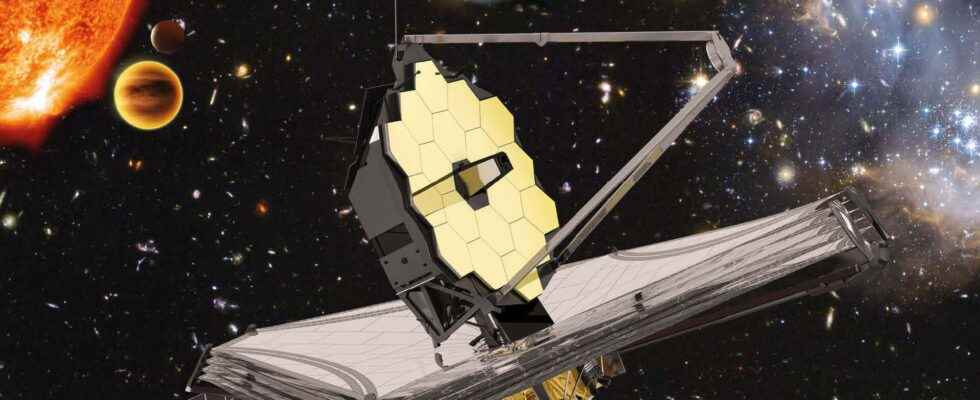The James-Webb Space Telescope continues to adjust its instruments to begin its first observations. During its mission, the JWST will notably be able to direct its instruments towards exoplanets and other worlds of the Solar System in order to learn more about their characteristics.
The expectation is only growing around the first sightings from James Webb Space Telescope (JWST). The spiritual successor ofHubble has the heavy task of teaching us more about theUniverse observable: galaxiesstars, nebulaeplanets and exoplanets. In a post published on January 31the Nasa explains the strategy of the US administration and the European space agency (ESA) to image and understand the different worlds dispersed in our solar system and revolving around other stars.
Observing planets to detect life?
The many instruments equipping the James-Webb will make it possible to observe the most distant (exo)planets in different ways. Miri (Mid-Infrared Instrument), NirSpec(Near-Infrared Spectrograph) and NirCam (Near Infrared Camera) will provide data and images of still unknown planetary and gaseous bodies, in the spectrum infrared and near infrared. Two methods will be used by researchers and engineers operating on the JWST. Spectrography is a widely used method in professional astronomical imaging. It allows to decompose the light captured by an instrument such as Hubble or the James-Webb, in order to establish a reliable “portrait” of the target studied. Coronagraphy simulates a phenomenon similar to an eclipse when the telescope points at a bright object. The obscuration of a star makes it possible, for example, to analyze its environment, and to potentially detect planets that are still unknown.
These works of study of the planets, and in particular those of the Solar system, will make it possible to understand its formation and evolution over 4.6 billion years. the James Webb Space Telescope wants to be a real alternative to the missions of overview and exploration robotics. His mirror massive primary, 6.5 meters in diameter, gives it formidable sensitivity and precision while its position at the Lagrange point L2 (1.5 million kilometers from Earth) gives it a privileged place to observe these distant worlds.
Beyond the Oort Cloud
The idea of planets more or less similar to Earth has stirred the collective unconscious since 1995 and the discovery of the first exoplanet by Didier Queloz and Michel Mayor. And the scientists assure it: the James-Webb telescope will make it possible to learn much more about the hidden worlds beyond the borders of the solar system.
One of the systems targeted by NASA to be studied from every angle revolves around a star named Trappist-1, located 40.5 light-years from Earth. Seven telluric planets orbit around thestar, with diameters similar to that of our planet. The JWST will mainly observe Trappist-1b, the second most massive planet in the system, is close to its star. The space telescope will determine if Trappist-1b is a dead world or if it has a atmosphere rich in carbon dioxidelike the planets of the Solar System such as Venus, Mars or Earth. A more in-depth analysis of spectrum light emitted from Trappist-1b is also the key to decomposing its atmosphere, and ultimately, determining its potential habitability.
For now, the instruments of the new space observatory are being calibration and tensioning. The James-Webb will examine star HD-84406, located 260 light-years away in the constellation Ursa Major. The sighting could take place over the next few weeks, while the first images and results will be made public during the summer of 2022.
Interested in what you just read?
